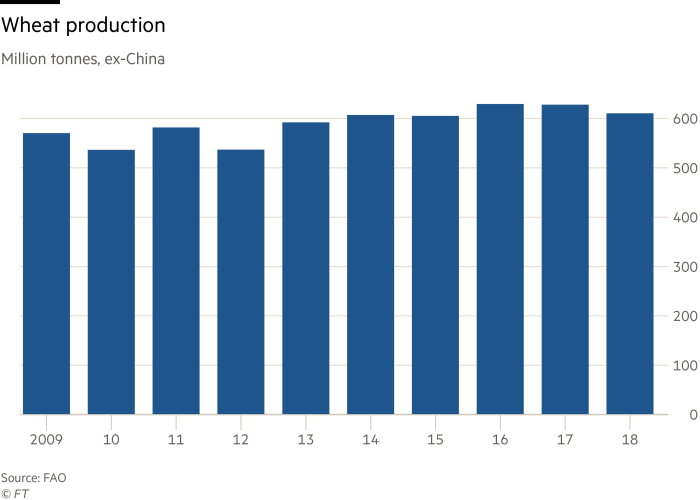Key food commodities face risk of price spike

Simply sign up to the Commodities myFT Digest -- delivered directly to your inbox.


The depressing effect of trade tension on key food commodities has obscured the risks of a sharp spike in prices, according to the UN Food and Agriculture Organization.
The introduction of trade tariffs — and the prospect of more — has added to the downward pressure on wheat, corn and soyabeans and left them trading at multiyear lows.
However, droughts this year in key growing regions, such as Brazil, Argentina and Russia as well as the EU, have prompted forecasters to cut their estimates for production. In recent years, bumper crops had helped soften prices for both grains and oilseeds.
The stock-to-use ratios — a barometer of tightness in supply and demand and an indicator of the buffer against unexpected shortfalls — for grains and soyabeans are forecast to fall sharply in the 2018-19 crop year.
“The market is getting tighter,” warned Abdolreza Abbassian, senior economist at the FAO. “Prices are dipping but the fundamentals will back wheat and corn.”
After excluding China, which has large government reserves of agricultural commodities, the global stock-to-use ratios for wheat, corn and soyabeans are predicted to hit the lowest levels for five years, according to the FAO.
Within corn production, leading exporting countries such as the US and Brazil are expected to report sharply lower stocks compared with the previous year. “The large exporters will have less to sell,” Mr Abbassian added.
Read more: US cuts forecast for soyabean exports to China
Comments